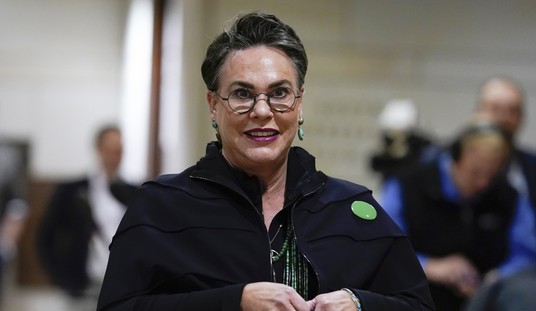The immediate reports out of Washington came and went so quickly in today’s blurred torrents of news that many missed the far-reaching and momentous social and political impacts of a recent, one-sentence statement from the Supreme Court.
The Court, meaning at least four justices, agreed to take up Mississippi’s new law limiting abortions as early as 15 weeks, as my Townhall Media colleague Ed Morrissey wrote about Friday at Hot Air. The court said in its next term beginning in October it would consider “whether all pre-viability prohibitions on elective abortions are unconstitutional.”
That’s immediately important because numerous states are moving to target the abortion business well before the viability threshold that’s generally considered to begin at 24 weeks.
That’s also important for a number of other reasons, starting with the 1973 Roe v Wade decision establishing a woman’s right to abortion.
But the timing of the highest court’s decision, which will come by June next year, puts the emotional and volatile issue smack dab in the midst of the campaigns for 2022’s midterm elections.
Current conventional wisdom on both sides appears to expect the Court’s Trump-crafted, conservative majority to agree in some fashion with Mississippi’s efforts to limit abortions in a pregnancy’s first trimester.
This would be a major victory for fervent pro-life forces that have labored for two generations since 1973 to overturn — or at least limit — the historic 7-2 Roe v Wade decision of the Burger Court establishing a woman’s right to an abortion.
However, be careful what you wish for. The decision, the arguments, and the debates surrounding it are certain to mobilize voters and political donors on both sides.
This seems likely to help equalize campaign energies, which historically tend to favor the party that does not control the White House. An incumbent president’s party has lost congressional seats in 19 of the last 21 midterm elections, on average about 30 House seats.
Today, Republicans need gain only five additional seats to retire Speaker Nancy Pelosi and install another Californian, Kevin McCarthy, to preside over the chamber. This is crucial, because it would cripple legislative enactment of Joe Biden’s increasingly aggressive and progressive legislative agenda.
Perhaps you’ve noticed the Biden White House’s urgency to move along with its spending and political agenda ASAP.
Such GOP momentum could help sway former President Donald Trump to commit to a reelection effort in 2024, if he hasn’t already by then, as I wrote on previously. That would pull off a replay of Grover Cleveland’s unique, 19th-century political act of one presidential term in office: one sitting out in defeat, and a second returning in triumph to the White House.
Trump said this weekend he’s pulling his personal 757 jumbo jet out of storage for refurbishing and repainting to take him to his planned, trademark political rallies that begin next month.
Recall in the closing days of last fall’s campaign, while Biden called a lid on his activities by mid-morning, the 73-year-old Trump was speaking to thousands of supporters at four or five major rallies in as many states into the night.
As the architect of the Supreme Court’s current conservative majority, Trump would surely have much to say about the need for voters to elect House and Senate Republicans who have his backing.
If they responded affirmatively, that could discourage other potential, 2024 Republican presidential candidates from openly challenging the 46th president. And it would strengthen Trump’s position as head of his adopted party despite last November’s stinging defeat and unsuccessful legal challenges to election results.
GOP candidates already have ample ammo to put Democrats on defense over Biden’s massive spending, planned tax increases totaling some $4 trillion, threats to energy independence and the unnecessary but expanding humanitarian mess on the southern border.
Biden, already the oldest man to serve in the Oval Office, would turn 80 right after the midterms, assuming he survives the continuing examples of mental confusions and verbal befuddlements in public.
Conversely, the often-exaggerated threat, real or perceived, to abortion rights would rouse Democrats out of any possible campaign complacency. Such themes have proven an effective liberal tool for political organizing and fundraising during these long years and endless debates.
The original Roe v Wade decision by the Burger Court, discovering a right to abortion through liberty from within the ancient Constitution, may have been welcomed by abortion activists.
But, it was so broad and over-reaching. It pushed legal precedent and social ramifications far beyond what a majority of Americans at the time were prepared to accept, igniting the flames of emotional and bitter controversy that endure and still smollder today.
Contrast that with the Court’s decision of 2015 that found a right to same-sex marriage under the Fourteenth Amendment. Have you seen angry, annual assemblies and noisy marches on the National Mall protesting that once-emotional issue?
No, you haven’t. To be certain, that ruling didn’t concern when life begins and how it might be terminated. But unlike Roe, requiring recognition of gay marriage did not shove Americans into forcible acceptance of an unknown social and political territory.
It merely recognized and acknowledged, legally and wisely, the space where a majority of Americans had already gone of their own volition — even if reluctantly.
So, the divisions were grudging, not bitter and long-lived.
No one can predict how the Court will come rule on “Dobbs v Jackson Women’s Health Organization,” Mississippi’s only legal abortion provider. Jackson is challenging a 2018 state law, the Gestational Age Act, that prohibits doctors from performing abortions after 15 weeks of gestation unless there’s a medical emergency or severe fetal abnormality.
Lower courts upheld that challenge.
The original Roe decision overturned laws in 46 states banning abortion, absent a threat to the mother’s life or health. Roe established rules for the three trimesters.
In the first three months, ending a pregnancy was solely up to the woman and her doctor. No state involvement was permitted. In the second trimester until the baby is capable of “meaningful life outside the mother’s womb,” state regulations were strictly limited to such things as who can perform the abortion and in what kind of medical facility.
In the last three months a state’s interest shifts to protecting the life of “a viable fetus,” giving it the power to prevent abortions, except when it’s necessary to protect the mother’s health or life.
Mississippi argues that medical advances and new scientific understandings of abortion and its medical risks require renewed examination of previous precedents banning abortion before viability. And the state claims it should be allowed to protect a mother’s health and prevent fetal pain in the first trimester.
It appears that, as with same-sex marriage, a general social consensus is forming around more limits on abortions. Opinion polls have found widespread public support at the two-thirds level for limits on abortion, certainly by the second trimester.
In apparent recognition of this, Biden aides acknowledge that work has already begun on federal legislation codifying abortion rights and prohibiting state limits on timing. That would take the issue out of the now-legally endangered court realm.
But, wait! If Republicans and Trump are successful in recapturing control of at least the House next year, they could block Biden’s abortion legislation right there.













